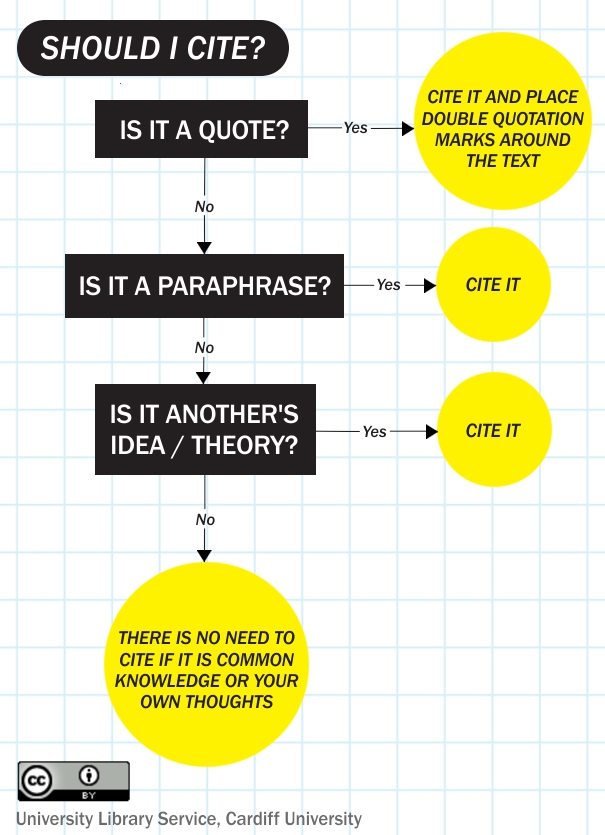When to cite
When to cite
You must always cite work that is not your own. The Examiners must be in no doubt as to which work is yours, and which is someone else's - whether that be ideas, text, figures or diagrams.
The following diagram, from the University of Cardiff, helps to illustrate when citations are required:

Reproduced with kind permission of the University of Cardiff ILRB
Common knowledge
As a general rule, a fact can be said to be 'common knowledge' when:
- it is widely accessible - you may not know the total population of China, but you would be able to find the answer easily from numerous sources.
- it is likely to be known by a lot of people
- it can be found in a general reference resource, such as a dictionary or encyclopedia.
For example:
Pterosaurs were the flying reptiles of the dinosaur age
'Everyone' knows this, so no citation is needed.
But...
Even the largest pterosaurs may have been able to take off simply by spreading their wings whilst facing into a moderate breeze.
Wilkinson, M.T., Unwin, D.M. and Ellington, C.P. (2005). High lift function of the pteroid bone and forewings of pterosaurs. Proc. R. Soc. Lond. B
Within particular disciplines, the boundaries of what is 'common' knowledge and what is 'expert' knowledge can be ambiguous, especially the further you get into your studies. If it isn't common knowledge, you'll always need to reference your source.
If you are in any doubt, ask your Tutor or Supervisor.
Using online resources
The internet provides access to millions of pages of freely available, downloadable source material, but remember there are no quality restrictions on the internet and you will need to make academic judgments about the material you find. Ask yourself:
- Who wrote it and why? If authorship of the electronic source is not given, ask yourself whether it is worth copying.
- Is the work fact, opinion, propaganda? Is it accurate/verifiable/current?
- What is the purpose of the site?
Be especially careful if cutting and pasting work from electronic media; do not fail to attribute the work to its source.
Using secondary sources
A secondary source is a commentary referring to information already presented in an original (or primary) source. It often takes the form of an interpretation, analysis or opinion of the original material, and as such should be treated with more caution in terms of its factual accuracy and reliability.
